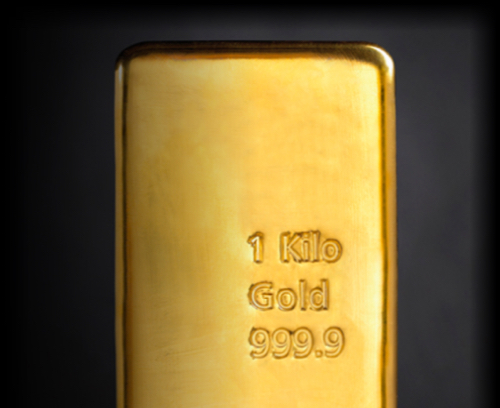Gold is one of the most coveted materials in human history, prized for its beauty, rarity, and many uses. Over time, the physical uses of gold have evolved. Alongside traditional jewellery and investment, gold is now used in technology, industry, finance, and fashion. This diversity of uses affects the value of your gold. Here’s how:
Traditional Uses of Gold
Jewellery
Gold has been used to make decorative items, including jewellery and art, for thousands of years. Its malleability and resistance to tarnish make it ideal for jewellery, and it has been worn or owned as a symbol of prestige, power, and wealth for millennia. This status symbol remains strong today. Around half of all gold mined is crafted into jewellery, making it a significant driver of demand.
According to the World Gold Council, jewellery accounted for 391 tonnes of gold demand in the three months to June 2024. While this is around 20% lower than the previous year (due to the gold price rising over 20%, which impacts jewellery demand), jewellery remains the largest driver of demand. Over half of this demand comes from India and China, both of which have strong cultural ties to gold.
Investment Gold
Alongside jewellery, gold has also served as currency for millennia, revered for its immutability and rarity. While no longer used to buy goods, it remains a popular long-term investment and store of value. Investment demand for gold makes up the second-largest proportion of gold demand. Total investment demand for gold in the second quarter of 2024 reached 254 tonnes, including physical gold coins and bars as well as exchange-traded funds (ETFs), which allow investors to buy gold like shares without holding the physical asset.
Gold’s popularity as an investment asset is largely due to its safe-haven status. The gold price often rises when other assets, like stocks and bonds, fall, acting as ballast in turbulent markets. Investment guidance often suggests including 5-10% gold in a portfolio to provide a counterbalance during market slumps.
Book a free consultation
We offer free 15 min, 30 min and 45 min consultations so you can ask as many questions as you like without feeling rushed.
Our expert brokers love to chat about all things Gold and Silver.

Gold can also act as an inflation hedge, as the gold price generally rises with inflation, unlike cash savings, which can be eroded as prices increase. Gold has historically performed well during geopolitical crises (of which there are many currently), offering stability in unstable markets. Its liquidity allows investors to buy or sell gold easily, and in certain situations, it can also offer tax efficiencies.
Central Bank Gold
Gold is a key element of fiscal policy, with central banks worldwide holding large quantities of gold to diversify their reserves and bolster financial stability. Gold serves as a hedge against inflation, currency devaluation, and economic crises, with central banks using it similarly to retail and institutional investors.
Central bank gold holdings help maintain confidence in monetary systems and bolster national reserves. Gold’s liquidity supports international trade, contributing further to financial stability and economic security.
At the start of 2024, central banks were on a significant gold-buying spree, purchasing almost 300 tonnes of gold in the first quarter. This slowed to 183 tonnes in the second quarter, still above the five-year quarterly average. Central bank demand has been one of the major factors strengthening the gold price in 2024.
The Evolution of Gold in Technology and Industry
Gold’s unique properties make it ideal for use in electronics and medicine. Its excellent conductivity efficiently transmits electrical signals, and its resistance to corrosion ensures durability, essential for electronic devices. In smartphones, computers, and other consumer electronics, gold is used in connectors, circuit boards, and wiring. A typical iPhone contains around 0.034g of gold (about £2.22 at current prices), while a computer may have up to 0.2 grams (around £13), though the cost of extracting that gold can exceed its value without economies of scale. The electronics sector used 67.6 tonnes of gold in the second quarter, a 14% increase over the previous year, showing no signs of slowing.
The remainder of technology demand (13.6 tonnes) comes from industrial applications such as aerospace, glassmaking, chemicals, nanotechnology, and dentistry. These applications rely on gold-plated connectors and wiring, crucial in harsh environments (such as space) where even minor corrosion could cause failures.
In the fashion industry, gold is woven into garments or used in embellishments like buckles or buttons. Gold or gold-plated accessories, and even gold-plated smartphones, signify luxury, status, and wealth.
What drives the gold price?
With such diverse applications, gold demand is influenced by multiple factors. Chief among these is its safe-haven status, meaning gold often appreciates in times of instability. War, geopolitical tension, economic crises, or even the anticipation of such events prompt investors to turn to gold.
This is true not only for investors and central banks who buy gold for its intrinsic value, but also for jewellery buyers who value it for both aesthetic appeal and long-term worth. Although a gold chain costs more than its weight in gold due to design and manufacturing costs, it always holds value equal to its gold content.
Gold price & economic factors
The gold price is also impacted by inflation, as gold often rises with other goods prices, and by interest rates, with lower rates enhancing gold’s attractiveness as a non-yielding asset.
Investors and central banks are likely to continue buying gold if they perceive imminent risks, such as war or economic downturns. Technology demand will grow as the unique physical properties of gold make it indispensable in increasingly complex electronic products. Jewellery demand may temper as the gold price rises, but the cultural and status significance of gold continues to draw buyers into the market. Gold’s rarity and distinctive properties ensure that its diverse uses will drive its value over the long term.
